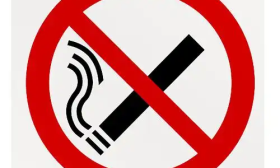The Invisible Threat: How Secondhand Smoke Compromises the Museum Experience and Endangers Public Health
Museums are sanctuaries of culture, history, and art. They are places where we go to learn, to be inspired, and to connect with the vast tapestry of human achievement. We walk through their quiet halls, expecting an environment that is not only intellectually stimulating but also physically safe. We trust that the air we breathe is clean, allowing us to focus entirely on the wonders before us. However, a persistent and often invisible threat can shatter this trust: secondhand smoke. The dangers of secondhand smoke exposure for museum visitors are a significant public health concern that undermines the very purpose of these cultural institutions.
Let's first understand what we're dealing with. Secondhand smoke, also known as environmental tobacco smoke (ETS), is not merely an unpleasant odor; it is a toxic cocktail of over 7,000 chemicals. Hundreds of these are known to be poisonous, and about 70 can cause cancer. When a person smokes, the smoke that comes from the burning end of the cigarette (sidestream smoke) and the smoke they exhale (mainstream smoke) mingles in the air. This combination is what non-smokers involuntarily inhale. The health risks associated with this involuntary inhalation are severe and well-documented by global health authorities. For museum visitors, these risks are amplified by the often enclosed and crowded nature of the spaces.
One of the most immediate and disruptive effects of secondhand smoke for a museum guest is the impact on respiratory health. Imagine a family visiting a natural history museum. A child with asthma is marveling at the dinosaur skeletons when the faint but unmistakable scent of tobacco smoke drifts into the gallery from an outdoor area near an entrance or an inadequately isolated smoking zone. Within minutes, the child begins to cough and wheeze. The educational family outing turns into a medical emergency. This is not a far-fetched scenario. For individuals with pre-existing conditions like asthma, bronchitis, or emphysema, even brief exposure to secondhand smoke can trigger severe attacks and significantly worsen their condition. But it's not just those with known conditions. For any visitor, the irritants in the smoke can cause immediate symptoms like coughing, sore throat, eye irritation, headaches, and dizziness. Instead of contemplating a masterpiece of Impressionist art, a visitor is left fighting a headache and nausea, their experience irrevocably tarnished.
Beyond the acute respiratory effects, the long-term health consequences of repeated exposure are even more alarming. Museums often employ dedicated staff—security personnel, ticket clerks, and tour guides—who spend entire days in the building. If secondhand smoke is able to infiltrate the building, these individuals face a sustained, occupational-level hazard. For regular visitors, such as members or researchers who frequent the museum, the cumulative risk increases. The link between prolonged secondhand smoke exposure and an increased risk of developing heart disease, stroke, and lung cancer is unequivocal. When we step into a museum, we are not consenting to an increased risk of life-threatening illnesses. The problem of secondhand smoke drifting into museums from doorways and windows is a critical indoor air quality issue that needs addressing to protect frequent museumgoers and staff.
The harm inflicted by secondhand smoke in a museum context is not limited to physical health; it profoundly degrades the overall visitor experience. Museums are designed for contemplation. They are quiet spaces where subtle details matter—the brushstroke on a canvas, the delicate craft of an ancient artifact, the subtle lighting in a historical exhibit. The intrusive smell of smoke is a powerful sensory pollutant. It can overwhelm delicate aromas in historical reconstructions, cling to clothing, and create an unpleasant atmosphere that is directly at odds with the museum's mission. A visitor trying to read a detailed placard about a historical event will find their concentration broken by the smell. The enjoyment of art and culture requires a certain level of comfort and immersion, which secondhand smoke utterly destroys. This is a key reason why implementing and enforcing comprehensive smoke-free policies for museum premises and perimeters is so vital for preserving cultural heritage enjoyment.

A common misconception is that designated indoor smoking rooms or ventilated areas are an adequate solution. Science has proven this to be false. There is no safe level of exposure to secondhand smoke. Smoke cannot be contained by walls or ventilation systems; it travels through air vents, under doors, and is carried back inside on the clothing and hair of smokers. The only way to fully protect museum visitors and staff from the dangers of secondhand smoke is to establish a 100% smoke-free environment. This means not only prohibiting smoking inside the building but also creating a substantial buffer zone around entrances, exits, and air intake vents. Effective strategies to prevent secondhand smoke exposure in public cultural venues must be absolute to be effective.
Furthermore, the presence of smoking areas near museum entrances normalizes the act of smoking in a family-friendly and educational setting. Children and young adults on school trips see adults smoking, which can inadvertently influence their perceptions and make smoking seem more acceptable. Museums have an educational and ethical responsibility to promote public well-being, and that includes modeling healthy behaviors. By creating a completely smoke-free campus, museums send a powerful message that they value the health of their community. This commitment to visitor health and safety through smoke-free museum policies enhances the institution's reputation and aligns its operations with its educational goals.
So, what can be done? The solution requires a multi-faceted approach. First and foremost, museum administration must lead the way by instituting and strictly enforcing a comprehensive smoke-free policy that covers the entire property, including outdoor plazas, courtyards, and a perimeter of at least 25 feet from any entrance. Clear, multilingual signage should be posted to inform the public. Secondly, museums can offer support by providing information on smoking cessation programs for their employees and even for members of the public, positioning themselves as pillars of community health. Finally, as visitors, we have a voice. If you experience secondhand smoke infiltration in a museum, politely inform a staff member or manager. Provide feedback through comment cards or online surveys, expressing your concern about the health risks and the diminished experience. Public demand is a powerful catalyst for change.
In conclusion, the right to enjoy our cultural heritage should not come with the risk of inhaling toxic, cancer-causing substances. The evidence is clear: secondhand smoke poses a direct and serious threat to the health, comfort, and safety of everyone who walks through a museum's doors—children, seniors, individuals with health conditions, and healthy adults alike. Protecting museum visitors from the harmful effects of secondhand smoke exposure is not merely a matter of policy; it is a fundamental duty of care. By advocating for and implementing strict smoke-free environments, we can ensure that museums remain the safe, inspiring, and healthy havens for learning and reflection they are meant to be. Let's work together to clear the air, so that the only thing that takes our breath away in a museum is the beauty and history it holds.














